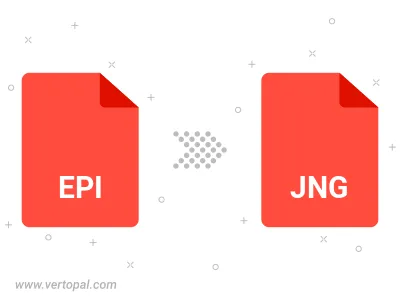Convert EPI to JNG
Convert EPI images to JNG format, edit and optimize images online and free.

The EPI file extension stands for Encapsulated PostScript Interchange, a format developed by Adobe in the late 1980s. It facilitates the integration of vector graphics and text into documents for high-resolution printing. EPI files, a variant of EPS, are primarily used in graphic design and desktop publishing to ensure consistent and scalable image quality. This format employs Adobe's PostScript language to describe the appearance of a single page, making it ideal for embedding illustrations in various documents.
The JPEG Network Graphics (JNG) file extension is designed for storing JPEG-encoded image data within the PNG file format. Introduced as part of the MNG (Multiple-image Network Graphics) format, JNG was created to provide a flexible, high-quality image format that supports both lossy and lossless compression. It is particularly useful in applications requiring the integration of JPEG compression within a wider range of data types and multimedia elements. Though not widely adopted, JNG offers enhanced compatibility and versatility for complex imaging tasks in computer graphics and web development.
Drag & drop any EPI file from your device or click the Choose File button to proceed.
Use any available convert tools on the preview page, and click Convert.
Let the file convert, then you can download your JNG file right afterward.

To change EPI format to JNG, upload your EPI file to proceed to the preview page. Use any available tools if you want to edit and manipulate your EPI file. Click on the convert button and wait for the convert to complete. Download the converted JNG file afterward.
Follow steps below if you have installed Vertopal CLI on your macOS system.
cd to EPI file location or include path to your input file.Follow steps below if you have installed Vertopal CLI on your Windows system.
cd to EPI file location or include path to your input file.Follow steps below if you have installed Vertopal CLI on your Linux system.
cd to EPI file location or include path to your input file.